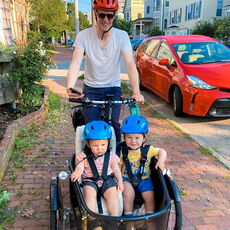
Living in Portland without a car is possible, but challenging: Advocates call for safer streets
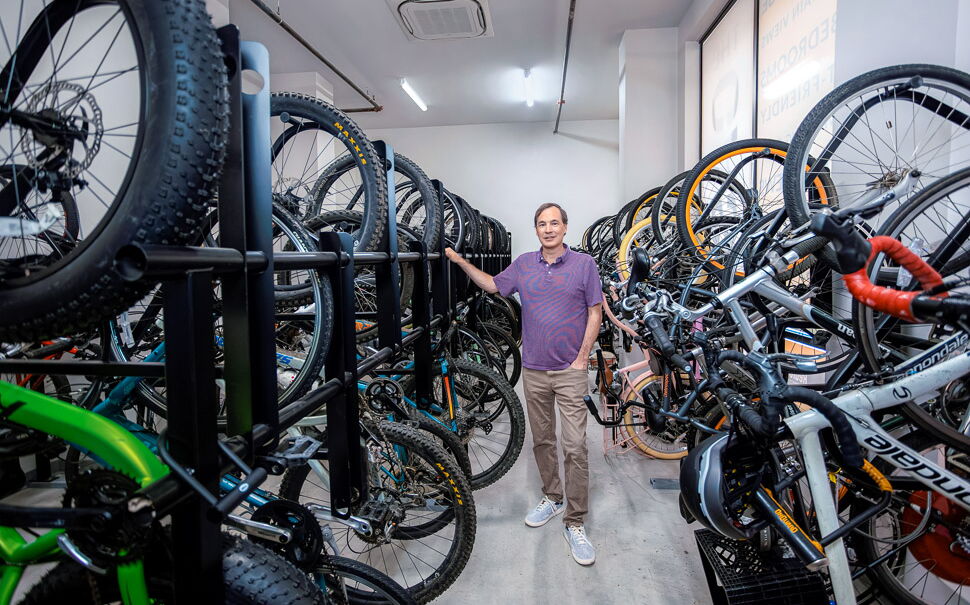 Photo / Tim Greenway
Johnathan Culley, a managing partner at Redfern Properties, with the many bikes stored at the newly-built Casco apartment building at 201 Federal St.
Photo / Tim Greenway
Johnathan Culley, a managing partner at Redfern Properties, with the many bikes stored at the newly-built Casco apartment building at 201 Federal St.
Many Portlanders navigate the city without a vehicle, whether from necessity or from choice. Instead of driving, they bike, walk, take the bus — often using a mix of all three methods of inner-city transport.
Mainebiz was interested to learn from those who choose a car-free lifestyle, why they do it. How do they manage to commute to work in inclement weather and source groceries?
And is it safe to ride in Portland?
Amenities in new housing developments cut travel
Portland housing developers Jonathan and Catherine Culley are advocates for walkable neighborhoods and car-free living. Over the past decade the couple’s Redfern Properties has developed seven apartment buildings and three condo complexes on the peninsula, 800 housing units in all.
Redfern’s latest project is the 18-story Casco complex, on the corner of Federal and Temple Streets, where there are 263 apartments — and no parking spaces.
There is indoor storage for some 80 bikes and a host of other amenities designed to make inner-city living without four wheels easy. A fully equipped 1,600-square-foot fitness room negates the need to travel to a gym, and there are two 2,000-square-foot lounges, one for working, and the top floor space is for socializing and admiring the view. All units have washers and dryers, and there’s trash and recycling service.
Additionally, a new food mart is about to open in the building, adjacent to a nearly completed 5,000-square-foot outdoor park — with a fountain.
What about grocery shopping?
Jonathan Culley says the majority of his tenants — many of whom work in town — have groceries delivered.
“Or once a week they Uber to the store at a cost of maybe $20, so that’s $80 a month, versus owning a car which costs between $700 and $800 a month with insurance, repairs and car payments. Having a car is a huge expense,” he says.

Tom Nosal, who lives on Munjoy Hill, figures he’s saved at least $130,000 over the 16 years he’s lived car-free, while reducing his impact on the planet. Nosal is a project engineer with Toole Design and focuses on building safe and accessible infrastructure for cities.
He and his wife chose to live without a car for years and enjoyed biking and riding the bus from their home on Munjoy Hill to work, the grocery store, and to social events. The couple in fact got married on the Eastern Promenade and then led a 50-member bike parade to their reception at Bunker Brewing in the Libbytown neighborhood, with drivers and bystanders cheering them on.
They reluctantly purchased a car earlier this year, but only because their daycare moved from Portland to South Portland. Nosal still bikes his toddler over the bridge to daycare as often as he can, and uses the car only when absolutely necessary. Rain doesn’t stop him from biking to Hannaford for groceries.
Nosal says his life is immeasurably richer, and more fun, on a bike.
“I invariably run into friends on my route and we stop and chat,” Nosal says. “And when riding the bus with our son, people are so happy to see a baby; we talk. There’s so much more connection than when driving a car. And it’s so much more interesting for our son, than what he’d experience in a car seat where he can’t see anything.”
How safe is it to bike around Greater Portland?
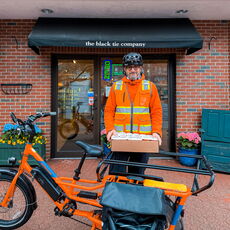
Nosal notes that riding in Portland can be treacherous; he was rear-ended once on the corner of India and Congress streets, and feels the city needs to do much more to improve safety for bikers and pedestrians.
Tom Ruff, who owns Orange Bike Brewery in the Bayside neighborhood, is an ardent biker and commutes to and from his home in Cape Elizabeth. He also makes beer deliveries to restaurants around town on his electric cargo bike and is working on creating a dedicated bike delivery fleet.
“It’s scary out there. Every morning crossing the Casco Bay Bridge, I look down and see 40% to 50% of drivers on their phones. I was nearly taken out in the bike lane and now ride on the pedestrian path, which is legal, only to get yelled at for not being in the bike lane. If folks saw what I see every day, they might understand,” Ruff says.
“The city’s infrastructure is not designed with bikers in mind. Most streets lack clearly marked or protected bike lanes, and the ones that do exist often disappear without warning or force you into fast-moving traffic. It becomes a daily risk assessment just to get from point A to B. I love this city, but we can and must do better.”
Ruff bikes for exercise and to lower his carbon footprint.
“But most of all, it’s the joy. Biking clears my head, inspires me and gives me a sense of freedom that driving doesn’t,” he says.
“Biking keeps me grounded and connected — to the city, to the environment, and to my community. But if we want Portland to truly be a bikeable city, we need to stop treating cycling like a fringe lifestyle and start treating it like real, practical, everyday transportation. Infrastructure follows priorities — and right now, our priorities are off.”

Advocates for change
Ruff champions the work of the Bicycle Coalition of Maine, Portland Trails and Portland Gear Hub, which all advocate for greater safety and accessibility for bikers and pedestrians.
The Bicycle Coalition of Maine works in all of Maine’s 16 counties, hosting events to raise awareness and build community, and it collaborates with the Greater Portland Council of Governments, the Maine Department of Transportation and city officials.
The coalition’s director, Andrew Zarro, agrees with Ruff that Portland can be dangerous. So far this year there have been 17 recorded crashes with bikes and cars, Zarro notes, 18 with pedestrians and autos.
Three pedestrians have been killed on Portland’s streets since January.
Though an avid cyclist, Zarro ticks off a list of streets he won’t ride, including State, High, Park and outer Congress streets; Forest, Washington and Brighton avenues and the Franklin Arterial (Franklin Street), which he describes as “essentially a highway.”
Jeremiah J. Bartlett, the city’s transportation systems engineer, says Portland has roughly 43 miles of bike lanes, “23 miles of which have a striped buffer to provide additional separation between the bike lane, on-street parking and/or motor vehicles. In addition, we have the parking-separated bike lanes on Park Avenue.”
There are a few traffic-calming initiatives in the works, along with plans for a new bike lane on York Street between State and High streets, which is proposed to have a seven-inch curb between bikers and drivers. The earliest date for that project is sometime in 2027 or 2028.
New bike lanes have been approved for Park Avenue and Congress Street between St. John Street and Fore River Parkway, but the $22 million in funding was recently eliminated by Congress, Bartlett says.
There are proposals for fully separated bike lanes as part of the Franklin Street redevelopment project and to link the peninsula to the new Roux Institute campus. Both projects require funding.
There are close to 100 miles of trails throughout Greater Portland, though for commuters, those routes add time and miles.
A trial bike share program is in its fourth year in Portland, but Zarro says, “that’s mainly for tourists.”
Some commuters use the bus system
Greater Portland Metro runs buses around the city, up to Falmouth and over to South Portland, and the Metro Breez line takes passengers to Yarmouth, Freeport and Brunswick.
One fan of the city bus system who lives in town tells Mainebiz she finds the buses to be clean, safe and reliable, with friendly drivers, though she uses it only occasionally, preferring to walk or bike for exercise.
L. Garcia says she buses to Thompson’s Point — to save the parking fee — and to restaurants and venues in nasty weather, but does find the schedule to be somewhat limited. More riders could encourage the city to increase routes and schedules, but if people find it inconvenient, ridership won’t grow.
“It’s a chicken and egg situation,” she says. “I’ve taken it once to the airport but I had to walk pretty far to the airport entrance which wouldn’t work on a bad weather day or if I had kids in tow, lots of luggage or mobility issues.”
Zarro adds, “The city understands that it needs to act. Portland can become a bike-friendly and pedestrian-friendly city one day, but we have a lot of work to do.”

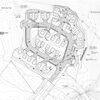








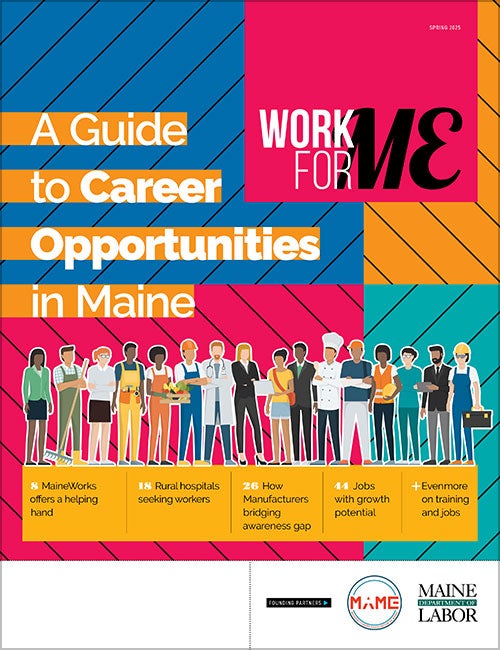


0 Comments